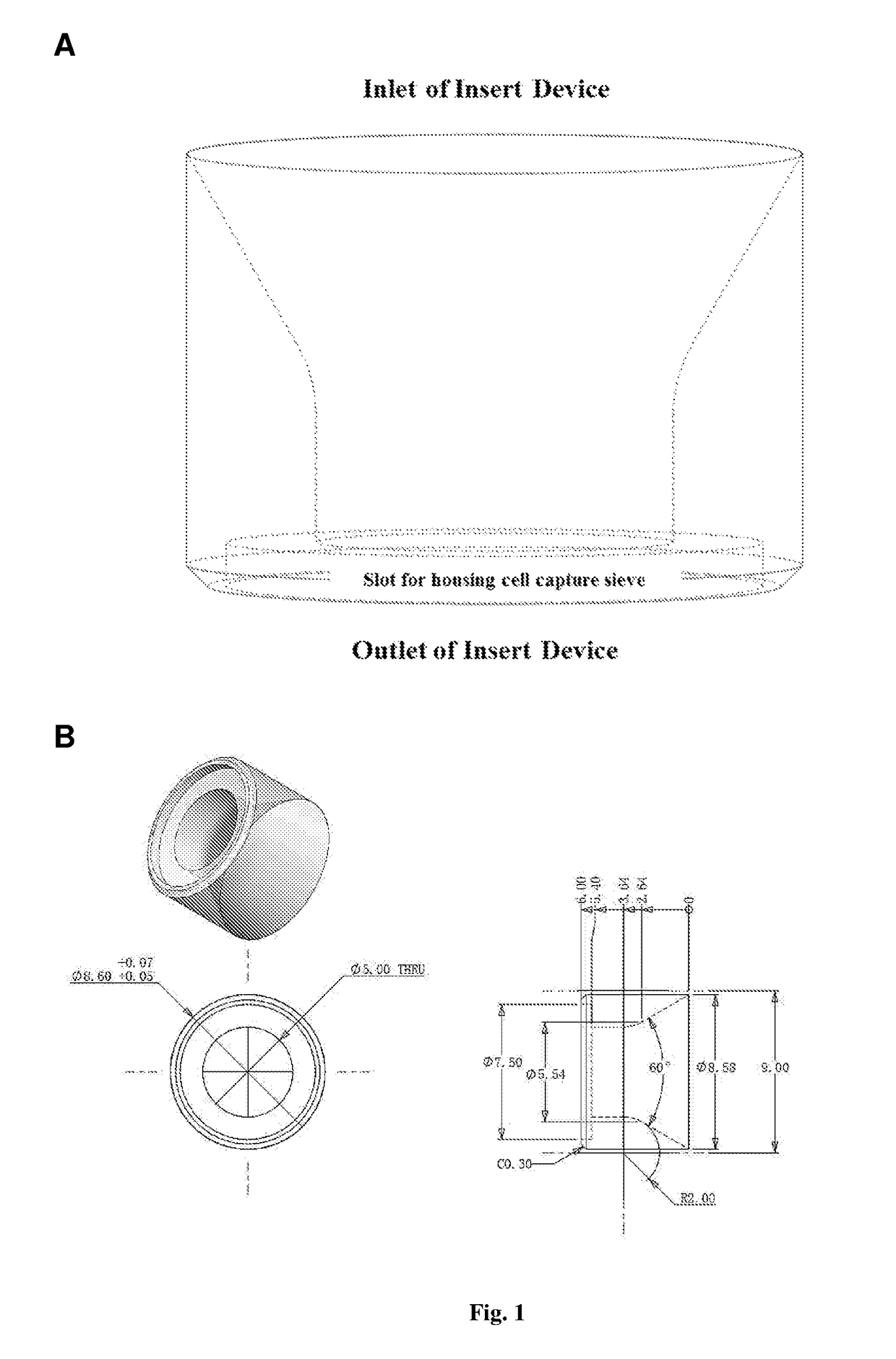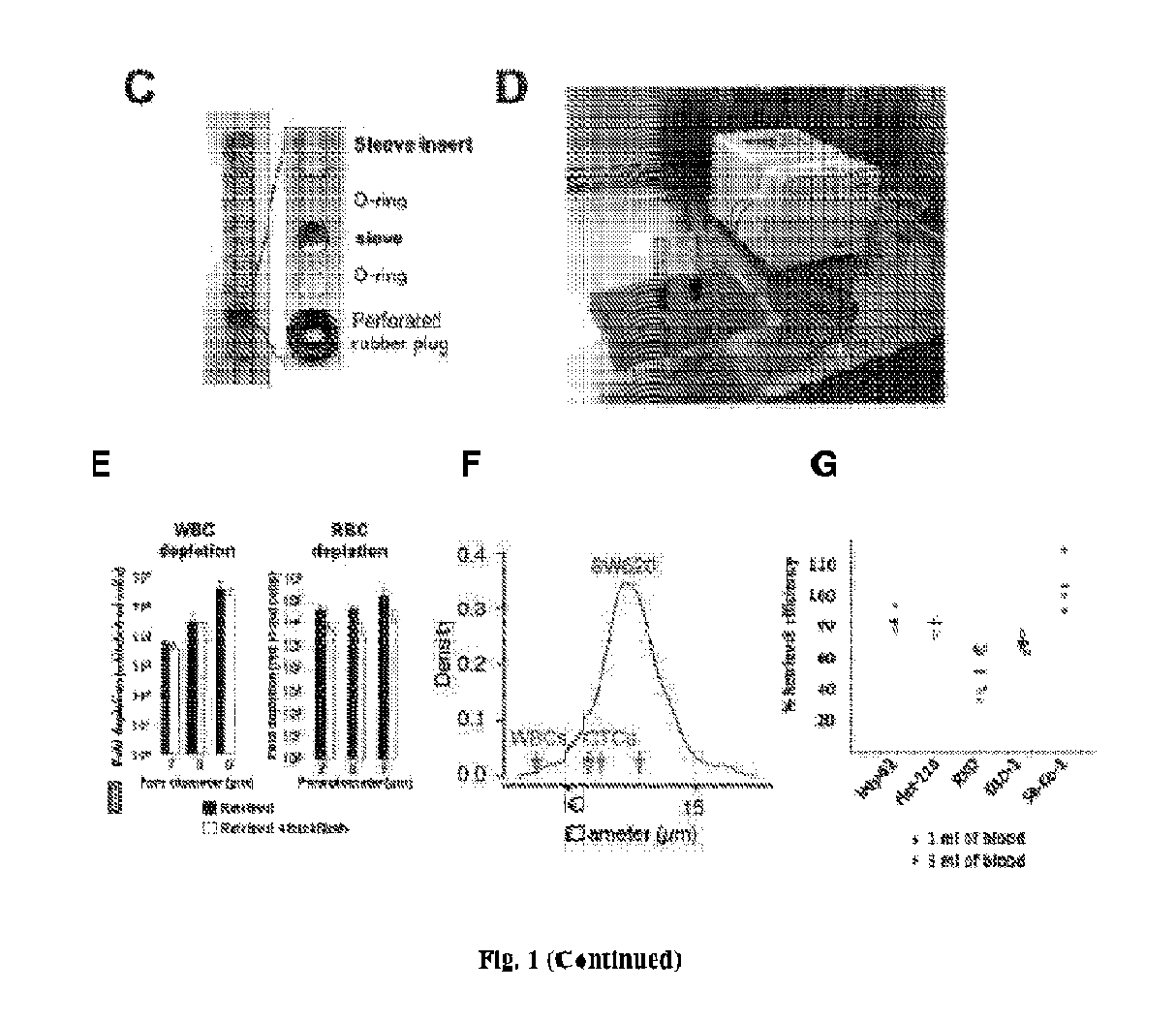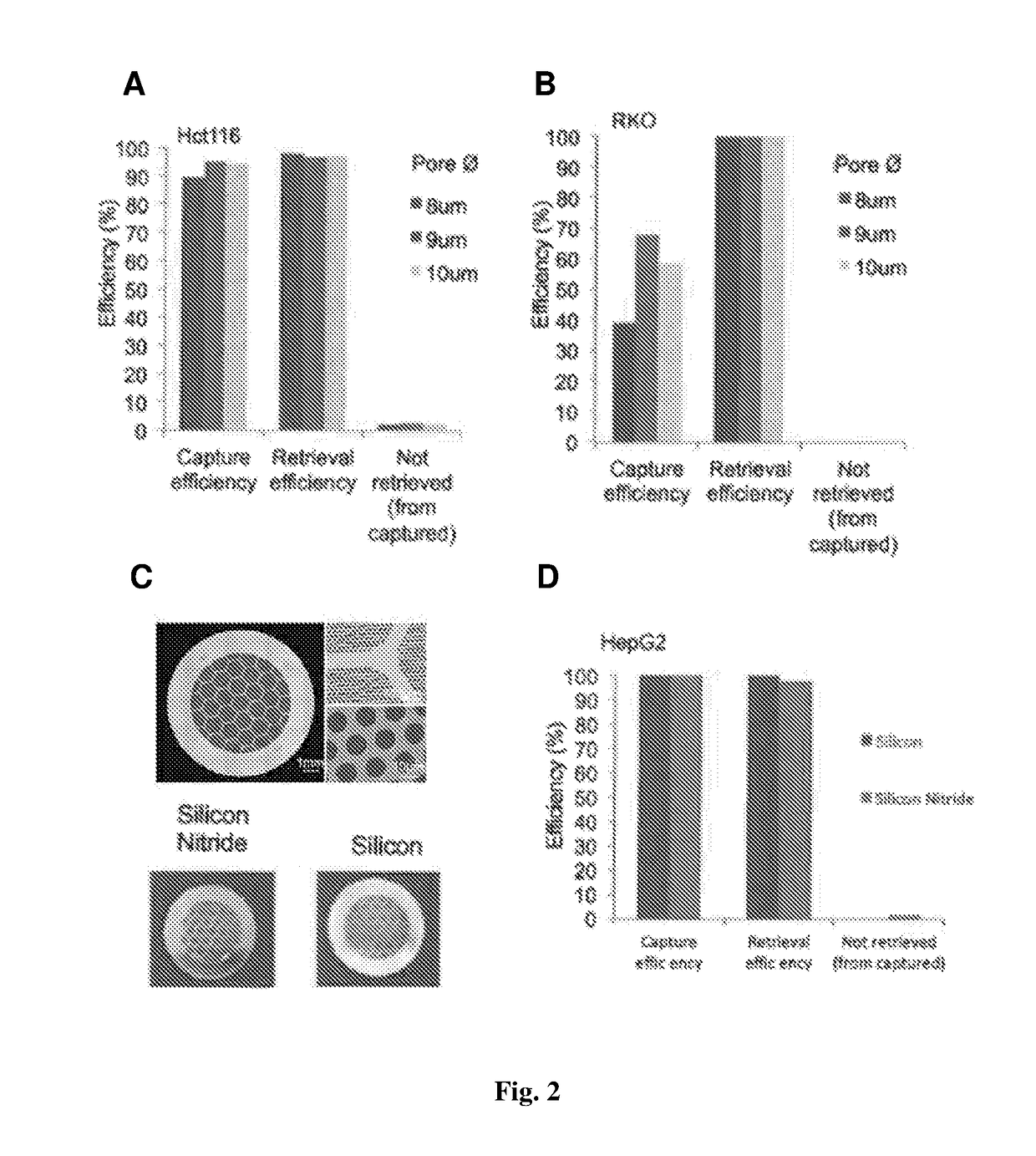Column-based device and method for retrieval of rare cells based on size, and uses thereof
a collection device and cell technology, applied in the field of collection device and method for retrieving rare cells based on size, can solve the problems of imposing certain health risks on patients, limiting the subsequent analysis of captured cells to on-sieve characterization, and inability to perform more complex analyses such as dna mutation analysis or gene expression analysis on single cells of interes
- Summary
- Abstract
- Description
- Claims
- Application Information
AI Technical Summary
Benefits of technology
Problems solved by technology
Method used
Image
Examples
example 1
Device for the Capturing and Retrieval of Cells from Blood
[0281]FIG. 1A shows the insert sleeve, which has an inlet at the upper end and an outlet at the lower end. The insert sleeve functions as a housing for the cell capturing sieve, securing the cell capture sieve near the outlet of the column of the device. The sample flows in from the inlet of the insert sleeve, and flows out through the outlet of the insert sleeve. FIG. 1B shows that the channel through which the sample flows tapers at the lower end of the insert sleeve. FIG. 1C illustrates the assembly of the insert sleeve and the cell capture sieve within the column. The cell capture sieve (sandwiched between two O-rings) is first placed into the slot near the outlet of the insert sleeve, and then the entire insert sleeve assembly is inserted into the column by using an insert tool in the form of a rod (not shown). FIG. 1D shows two cell capturing and retrieval devices being connected to a peristaltic pump, while FIG. 3A sho...
example 2
Capturing and Retrieval of Tumor-Derived Endothelial Cell Clusters (TECCs)
[0289]Patient samples and clinical data. All subjects had given informed written consent to participate. Clinical samples were obtained between July 2012 and April 2014 according to protocols approved by the Institutional Review Boards (IRB) of the National University of Singapore, Fortis Surgical Hospital and Singapore Health Services (SingHealth). Consecutive blood samples from 82 colorectal cancer patients were provided by Fortis Surgical Hospital (FSH) and National Cancer Center, Singapore (NCC). Blood samples from 45 healthy subjects were provided by the Singapore Consortium of Cohort Studies (SCCS). All samples were collected in EDTA Vacutainer tubes (Becton-Dickinson) and processed within 6 h at the Institute of Bioengineering and Nanotechnology. Two cases were excluded from analysis because of technical failure of the microfiltration device. Wherever available, matched tumor and metastatic samples were...
example 3
Analysis and Characterization of the Captured and Retrieved TECCs
[0298]This example describes a method for identification and analysis of a well-defined population of endothelial cells (cells originating from the blood vessel) that can be isolated from blood and can be used as biomarker for:
[0299]1) Diagnosis of tumors at all stages, even at very early stages of the disease
[0300]2) Monitoring response to therapy of tumors
[0301]3) Predicting response to therapy of tumors
[0302]4) Predicting blood vessel features of the tumor
[0303]The method may be used on its own, or can be combined with standard diagnostic / prognostic methods to increase the accuracy of the diagnostic / prognostic test(s). For example, this method can be combined with CEA measurement (a biomarker of colorectal cancer that is measured in blood) to facilitate diagnosis of colorectal tumors.
[0304]On-sieve immunofluorescence. Suspension cells were stained for 30 min directly ‘on sieve’ after 5 washes in PBS containing 0.5% ...
PUM
| Property | Measurement | Unit |
|---|---|---|
| diameter | aaaaa | aaaaa |
| diameter | aaaaa | aaaaa |
| diameter | aaaaa | aaaaa |
Abstract
Description
Claims
Application Information
 Login to View More
Login to View More - R&D
- Intellectual Property
- Life Sciences
- Materials
- Tech Scout
- Unparalleled Data Quality
- Higher Quality Content
- 60% Fewer Hallucinations
Browse by: Latest US Patents, China's latest patents, Technical Efficacy Thesaurus, Application Domain, Technology Topic, Popular Technical Reports.
© 2025 PatSnap. All rights reserved.Legal|Privacy policy|Modern Slavery Act Transparency Statement|Sitemap|About US| Contact US: help@patsnap.com



